|
The clouds sweeping and swirling over the lush green mountains below are the first indication we'll soon be landing in Chiang Mai, the largest city in northern Thailand. Flying from Bali, with a quick stopover in Bangkok, we're in search of the picturesque mountains, delicious food, and artistic culture this region is known for. In addition to being the largest, Chiang Mai is also the most historically significant city in northern Thailand, as it was the capital of the Kingdom of Lanna from the 13th to 18th centuries. Only 700 kilometers from Bangkok, about the distance from Los Angeles to San Francisco, it's very different than the capital in the south. Translating to "new city" because it became the new capital of the Lanna kingdom when founded in 1296, Chiang Mai feels like a mix of ancient and modern. The old, walled city, a perfect square, is home to dozens of ornate, gold-plated wats (temples), creating an air of spirituality that feels grounded and calm, a wisdom undoubtedly gained through a long history. Other than the wafting aromas of pad thai, curry, and khao soi (a noodle dish made with coconut milk unique to this region), the most noticeable difference between Thailand and other countries in Southeast Asia is the absence of colonial architecture. Combined with better infrastructure and clean streets, it's easy to see what avoiding war and colonial rule has done to create a much improved standard of living. Throughout our time in Chiang Mai we continuously talk about how well everything is maintained; a deep contrast to its neighboring countries. And while the city itself feels old, new technology and creative solutions for everyday conundrums are abundant here. Reverse osmosis water stations provide an almost miraculous solution to the lack of clean drinking water found throughout Southeast Asia, while mobile ATMs and do-it-yourself washing machines all over the city make life on travelers and locals alike infinitely easier. Inside the walls of the old city on our second night, we catch sunset at the Chedi Wat, which dates back to the 15th century. As the light fades across the golden Buddha statues on each side of the temple, young monks pass by and a woman parks on a nearby bench to feed the group of stray dogs that live in the complex. It's difficult to fully translate the experience, but all of this combined with the quiet breeze of the warm evening provides a glimpse into what makes Chiang Mai such a sacred place. Juxtaposed to the ancient temples within the old city, the young and vibrant area surrounding Chiang Mai university on the city's west side reels with energy. Trendy coffee shops and salad spots bookend places like "Beer box," a small beer bar within a free standing cedar wood container surrounded by tables under the trees, serving beer from all over the world. Just up the street we catch our first movie in over two months at the new Maya mall, watching the cinematic genius also known as Jurassic World, followed by a trip to a trendy salon for two much-needed haircuts. We've stuffed ourselves with delicious Thai food but our biggest failure is that we haven't yet had a Thai massage. At 200 baht ($6), they're practically free by western standards, and available on every city corner. We can only hope there will be many massages to come throughout the rest of our travels in Thailand. For now, we're happy to share some amazing green curry, a cold Chang beer, and catch the sun set over the mountains from the 4th floor balcony of our hotel just outside the city walls.
1 Comment
Two months in and we’ve successfully adopted a few simple travel mantras. One is to be respectful and open to new cultures, another is to be familiar with the history of the region before visiting, and another is to do our very best to eat like a local (sans meat and nuts, of course). So, when we had the opportunity to visit a local fish market followed by a half day private Balinese cooking class with the Executive and Sous Chefs at the new Ritz Carlton Bali, we couldn’t pass it up. Looking more like a futuristic city on a recently discovered planet than a luxury hotel, the brand new Ritz Carlton sits perched on the side of a south Bali cliff, teetering above the Indian Ocean. Down a huge space age glass elevator, beautiful new suites and villas sit next to the ocean and eager staff members wait with carts to drive you to your room. The hotel is exactly what you expect - spacious, elegant, completely over-the-top, and not at all how we’re used to traveling. But we happily jump at the chance for some 5-star pampering, and the opportunity to hang (and do a little work) with our friend and fashionista travel blogger, La Carmina, to wrap up our Bali trip. As we make our way through the maze of fishing boats sitting on the shoreline, the chaos of the morning market engulfs us. Pairs of men carrying huge baskets of shiny fish on a 3-foot board across their shoulders scurry past us, to the women who sit, ready to sell, behind stalls at the market across the street. We’re informed that the fishermen are often out to sea for up to 12 days at a time, fishing through the night and sleeping on their boats in small clusters. The market sells every type of fish you can think of. Giant yellowfin tuna, huge squid, and every mollusk under the sun (or sea) are available. We’re the only tourists here, and with our Chef tour guide, have VIP status. We watch as he walks the narrow corridors with confidence, waving hello to friends and neighbors who are picking up fish for their families (without refrigeration, many local woman visit the market each morning to pick up everything needed for the day’s meals). The sense of community and daily ritual is evident, and amidst the chaos, we’re grateful to be silent observers. Back at the hotel, we gather in the spacious kitchen and are introduced to Master Chef Made Suriana (Made, the traditional Balinese name for the second born son) of the signature Balinese restaurant, Bejana. Reminiscent of a Mario Batali episode, the pre-prepped ingredients sit perfectly chopped and julienned in small bowls. We recognize some of the Asian flavors we’ve grown accustomed to: ginger, lemongrass, coconut, turmeric, garlic, shallots, and red chilies. As we get started, we also learn about new herbs and spices: pandan, a green plant that is a key ingredient in many local dishes, salam leaves, similar to a large bay leaf, and kaffir lime leaves. From scratch, we craft two "spice pastes" similar to a curry paste, one for seafood and one for meat (which we substitute for tofu and tempeh). The three of us take turns stirring and tasting as each spice is added into the pot to be later muddled together. The two pastes are very different, one deep red and one bright yellow, each bursting with unique flavors. From the spice pastes, Chef Suri demonstrates how to make a variety of dishes, from a curry-like sauce over rice, to minced mahi mahi satay (a kabob that is grilled on lemongrass reeds), to steamed tofu wrapped in folded origami-like banana leaves. After we complete our main courses, we move to dessert, learning how to make dadar gulung, rolled thin green pancakes filled with coconut and palm sugar. We eat two each before lunch is served.
We dig into the food that we spent the morning creating from a picturesque table near a window overlooking the ocean. Nasi goreng (Balinese fried rice) accompanies the tofu, tempeh and fish satay. We sip Bajigur, a hot spicy ginger and coconut milk concoction from Java that we all swoon over, prompting a serious brainstorm on how we can open a Bujigur shop when we get home. It's one of those meals that we will remember forever, not just for the fantastic food, but for the chefs who taught us their craft and the time that goes into creating such a feast, and for the good friend that we shared it with. Smashing across the Badung Strait on a small speedboat half full of locals, we’re heading for the tiny island of Nusa Lembongan. Each time the boat catches air, we brace for the impending plummet as it slams into the rough afternoon sea. The red sign in front of us reads “life jackets below the seat”, but after a quick inspection, there are clearly none to be found. We smile and grimace, taking in the thrilling ride one wave, and loud “smack," at a time. the island Twelve kilometers southeast of Bali, across the sometimes "dicey" Badung Strait, is the small island of Nusa Lembongan. With a population of 5,000 people, the 8 square kilometer island is home to beautiful limestone cliffs, white sand beaches, turquoise water and coral reefs. In recent years, it has become popular amongst tourists with more western restaurants and small modern resorts joining the established guest houses in two main villages. However Lembongan still feels like a throwback in time, with seaweed being dried on giant tarps along the shoreline, kids flying kites at sunset and a virtual silence that sets in after 8:30pm. Narrow, tangled streets accommodate motorbikes, "push bikes" (aka bicycles), and small hotel minibuses, making up the island's only transportation options. On the southeast shoreline, a yellow wooden suspension bridge over a narrow channel of water connects it to the neighboring island, Nusa Ceningan. Renting motorbikes and cruising around the two islands is a thrill, with potholed streets hugging the shoreline, hilltops with views of Bali in the distance and countless locations that feel virtually undiscovered. where to go The restaurant scene leaves much to be desired, with a handful of pricey western options combined with a good amount of warungs, some better than others, but all serving an odd combo of curry, seafood and Italian dishes. Channeling the many environmentally-conscious restaurants in Ubud, Bali Eco Deli offers small but tasty salads, amazing smoothies (don't miss the delicious date smoothie) and healthy pastries (all a bit pricey compared to local standards but worth the extra few dollars). They also act as a recycling center, collecting plastic bottles and shipping them back to Bali to be recycled. Lembongan lacks the infrastructure for a recycling center and garbage remains an ongoing struggle. We witnessed piles of trash and plastic bottles being burned multiple times during our five day visit, making supporting Bali Eco Deli a no-brainer. Bring your own reusable bottle and get 10% off your check, plus filtered water refills. Oh, and we love their signage (think of the kittens!). Warung Bu Candra is a very basic but a tasty and completely local restaurant. Dishes are between $1-2 and the owner is extremely welcoming. On the other end of the spectrum is Hai Tide Bar and Grill, which sits on Mushroom Beach and serves some fancier food, a combination of Indonesian and western classics. Both spots have a variety of vegetarian options and while Hai Tide is definitely more expensive, we were still able to share a delicious dinner dinner for about fifteen bucks and enjoyed the seaside setting. The best coffee/wifi combo we on the island is at Two Towers, sitting on the top of the hill in between Lembongan and Jungut Batu villages. The setting is idyllic and it is managed and ran by some of the nicest people we encountered. Try the inexpensive veggie sando or any of the strong coffee drinks or smoothies. living dangerously: night walks on Lembongan
Shuffling through the hilltop cemetery in the pitch black night, a sudden wind blows through the trees and across the pothole stricken road. Why we chose to walk the 1.5 miles through this dark, deserted island back to our homestay for the third night in a row, we can't say. It all started the night we arrived on Nusa Lembongan. We took a short walk to the beach that afternoon before discovering a cliffside path to the main village just over a mile away. In the daylight it was gorgeous, as picturesque as almost any place we'd been so far, with the turquoise blue waters gently lapping over the coral reef below, the local fishing boats bobbing in the distance. But after dinner, once the sun had set and the black night enveloped the sleepy island, we knew the walk home would be interesting, to say the least. Navigating the tiny web of village streets to get on the main road was difficult enough, but our phones were both on the verge of dying. A collective 20% of battery life we desperately tried to save so google maps could guide us home. Up a steep incline, past Panorama Point, is where we first found the cemetery. Not knowing it was there, the raised cement coffin-like headstones sitting under strange umbrellas was the first indication of what we'd stumbled upon. Quickly pushing through, only the light of a mini flashlight to guide us, the headlights of a small passenger van crept up... On the second night, we decided the cliffside path would be a better route home. After all, this time we'd brought Megan's headlamp and had familiarized ourselves with the island. Starting out, with bellies full from dinner, everything seemed so easy. We walked on the path, among piss-drunk Aussies and past swanky villas. But soon our mates from “Straya” veered off, heading to their villa, and we'd only made it a third of the way home. No worries, we had this, we thought. Crossing a small beach before climbing a steep, rocky section of the path inoto a forested area, feeling a bit less confident, we picked up the pace. A sudden rustling in the bushes! “Shit, what is it?!” Flashlights shining, large beer bottle ready for a defensive move, we saw the lovely brown cow we'd just met yesterday, as startled by our presence as we were her's. Confidence plunging, we hastened the pace once again. Megan swinging her flashlight behind her each time the trees whispered in the dark windy night. The jungle gave way to deserted huts and buildings under construction as a man walked quietly down the stairs toward us, from a spot up the hill. He followed us for a few hundred feet (probably to ask if we needed help, but we weren't going to risk it) before we made it to a restaurant, a sign that civilization and our home was near. On night three, and with flashlight and headlamp guiding the way, we high-five once making it through the cemetery. A group of local men on the balcony of a nearby shop say hello and exchange a few laughs at the expense of our nighttime “trek." But we don’t care, we’ve made it through the worst part and we’re feeling good. Back down the hill, we stumble upon a small house/store, almost within shouting distance of our homestay. Having succeeded in making it home alive through impossible circumstances for the third night, we reward ourselves with Paddle Pops (local, awesome, popsicles often consumed twice a day) and laugh at our exploits the rest of the way home. The moral of the story: Sometimes it's worthwhile to take the dark, semi-sketchy way home. We wouldn’t do it again, but if we hadn’t done it in the first place, there wouldn’t be a story at all. Driving up toward Ubud, the seaside chaos gives way to narrow streets lined with Hindu shrines and terraced rice fields surrounded by coconut trees. Maybe it's the subtle shift in climate, or the incense burning in front of each home and shop, but almost immediately, we get it. There is a calm energy (or "vibe" as our fellow Ubud travelers would say) to the gorgeous hillside town. Art galleries are found on nearly every corner and open-air coffee shops are full of happy transplants and tourists enjoying a cappuccino or pressed juice post yoga sesh. People are squeezed shoulder to shoulder at the local market and trendy boutiques display hipster mannequins in the windows. Within minutes of arriving, it's apparent that we aren't the only people who thought it was a good idea to explore Ubud. We manage to locate our homestay, Kamol House, about a kilometer out of town in the middle of a rice field. As we walk single-file down the narrow raised path, rows of rice in swampy water glow neon green below us. We reach the home, a Hindu offering resting dutifully on the front gate, and meet the three generations of family members and two puppies. We're warmly welcomed and invited to a local music and dance performance by the oldest son Wayan, but he goes by Sudi (we later learn that Wayan is one of three potential names given for the oldest son in Balinese culture, making it very common and easy to remember). That evening, following a lot of exploration, we make our way to the local dance performance. It's the second annual Royal Weekend Performance, with traditional Balinese dance accompanying world renowned ballerinas from Singapore and Japan. It seems like everyone who's anyone in Ubud's art community is present and the dancing and music is phenomenal. Benefiting from the abundance of healthy vegetarian food options, we indulge in our first western salads (greens, grilled veggies, avocado, cheese, etc) at Kismet Cafe since leaving the States. We also discover Arak, a local spirit that, when mixed with lime juice and honey, goes down dangerously easy. The "Arak Attack," as it's called, is potent and delicious, especially when enjoyed from Mingle Cafe & Lounge's second story open-air dining room. Happy hour two-for-one specials are definitely the way to go. Our other favorite spots for eats and drinks in Ubud are the trendy Indonesian tapas of Dapur Bunda, the understated, local, and cheap Dewa Warung, Warung Citta Ovest's amazing happy hour pizza and beer deal, and the awesome pour over coffee from Flabird Coffee. After a few days exploring, we decide that Ubud is the perfect little hilly town. Surrounded by beautiful rice terraces and jungle, it offers all of the culture and art of Bali but with all the comforts and ease of home. Its easy to love. the details:
the lowdown on our favorite spots:
Flying in to Bali from Cambodia on a plane full of western tourists feels more like a trip to Hawaii or Mexico than a visit to Indonesia. A volcanic island paradise situated between Java and Lombok, it's home to over 4 million people and the highest percentage of Hindus (85 percent) in Indonesia. Bali is covered with temples and soaked in spirituality, music, and art; some of the reasons its popularity as a tourist destination catapulted in the late 1990’s. Since then, planes like these, packed with visitors from all over the world, have become a common occurrence. But first impressions can be dangerous. After swiftly passing through airport immigration and customs, paying out the recently increased $35 visa fee, we’re approached by dozens of taxi drivers offering trips to nearby Legian for $20, when it’s barely 3 kilometers away and should cost $8. We let them know that “we’re okay” and find another, fair, offer. The bad news for them is that we’ve implemented a new travel rule: don’t go with the guy who tries to rip you off. Avoiding the sharks and making it into Legian, we’re greeted by a massive party scene, full of one way streets packed with bars, clubs, restaurants, and shop owners slinging hats, sunglasses, tee shirts, and viagra. At night, the offerings become more varied as marijuana, cocaine, and sex are added to the menu. Middle-aged men utter "You want something, boss" under their breath, while young, scantily-clad women say "Hey daddy" from nearby motorbikes. Easily the worst addition brought on by tourism in such a beautiful place. But the reasons people flock to this small island are clear. Massive waves crash on wide beaches, while skinny stone paths weave between thick walls amidst the tropical overgrowth that fills the space in between. We’ve found a quaint little hotel with a pool, just off the main road and it’s only $25 per night. From there we explore the web of one way streets that connects Legian with neighboring Kuta (the real party capital) and Seminyak (a slightly swankier version of Legian). Managing to avoid the mass of “western” restaurants offering pizza and nachos, we stumble upon Warung Yogya, which serves up our first taste of Indonesian food. The soupy coconut vegetable curry is on point and the gado gado is fresh and flavorful. Eating local has its benefits - we share a starter, two entrees and a large Bintang beer for around $7. After two nights near the beach we’re heading to the hills, to the rice fields, temples, yogis and floaty hippies of Ubud. the details:
In the heart of Siem Reap, along the riverside, food carts line the streets. These carts dish out everything from lort cha (short pan-fried noodles) to french crepes to fruit shakes. However, these are hardly your typical food carts. Unlike those we saw in Vietnam, these carts are actually a compact, mobile restaurant. They'attached to the side of the chef’s motorbike, making transportation to the city’s most bustling neighborhoods a non-issue. We've seen an entire family, cruising through town on one of these contraptions. Dad driving, mom, sitting behind, young daughter playing with a toy on top of what normally would be the food prep area. Creative and flexible, they also serve up some tasty and cheap eats. Our favorite street food in Cambodia is lort cha. Short, worm-like noodles, stir fried with broccoli and cabbage, served with a fried egg on top. Enjoyed on red plastic chairs with a local beer, it’s one of the best $2 dinners you’ll ever have. Other options include stir fired veggies and rice, yellow noodle stir fry with egg and even "fried pineapple," mixed with chilies. We also haven't gone a day in Cambodia without a smoothie or fruit shake, as they’re called here. Mango, papaya, passion fruit, pineapple, banana, dragon fruit and coconut are always available and any combination of the above is pure magic on a 90-degree day. Sometimes infused with a few drops of sweetened condensed milk and coconut water, and you'll be in heaven. Again, they’re $1, so we won’t judge if you have a second. the details:
No visit to Cambodia is complete without a trip to Angkor Archeological Park. In fact, for most travelers, it’s probably the only reason they make the journey to Siem Reap. And it’s well worth the trip. the facts The capital of the Khmer Empire from the 9th to 15th centuries, Angkor began under Jayavarman II, a Hindu monarch, in 802. Over 300 years later, King Suryavarman II built the largest religious monument in the world, Angkor Wat. It’s the focal point and most recognizable building of the Angkor complex, however the true value of Angkor rests with the assortment of temples, monasteries, and residences built by the kings of the Khmer Empire over six centuries. The empire warred and grew, only to recede again, while religious dedication fluctuated. Following Suryavarman II’s building of Angkor Wat, King Jayavarman VII converted the state religion to Mahayana Buddhism and constructed Angkor Thom, Ta Prohm, and Preah Khan. Shortly after, the empire returned to Hinduism before a permanent transition to Theraveda Buddhism in the 14th century. the experience Most visit this UNESCO world heritage site by tuk tuk or hired car. Some go via bus, with a large tour group. But these methods require schedules and programmed shuffling from temple to temple. Instead, we go with the third and probably least popular option: bicycles. When the 4:30am alarm leads to a sunrise over Angkor Wat, waking up is easier. Pedaling through the dark Siem Reap streets, sunlight starts to seep through the trees and glisten on the river beside us. A few kilometers to town, followed by a long, straight stretch through Cambodian jungle, leads to the first and most iconic temple, Angkor Wat. Bikes parked, the new day’s sun glows brighter as we cross a bridge over the temple's surrounding moat. We follow the crowds to a shallow pool of water on the left side for a reflection of the temple’s magnificent outline, back-lit by the Siem Reap sunrise, before heading in to explore. The road from Angkor Wat to Angkor Thom, only a kilometer or two, may be the most beautiful in the whole complex. Slender and straight, it is bordered by red dirt and trees that shoot high into a bright green canopy. Rays of sunlight shoot through the leaves as we approach the picturesque South Gate of Angkor Thom. The gate is incredible in itself, a narrow entrance making way to Bayon with its giant Buddha faces, followed by Phimeanakas, and the Terrace of Elephants. (There is an option to ride an elephant through the South Gate, but don’t do it - see below why not). Following Bayon, we have the option to continue on the “short loop” or the less visited “grand tour”, but it’s three hours into the morning and not yet blazing hot, so we choose to push on (see note below if you choose this route by bike). The ride is rewarded by a calm and shaded stretch of road before reaching Preah Khan, a once Buddhist monastery, now covered in jungle overgrowth. Skipping Neak Pean, we move on to Ta Som, a small temple complex with ancient passageways engulfed by tree roots and limbs. Only a few other visitors during our stop here make the idyllic temple feel even more secluded. We continue on to what will eventually be a 26 mile round trip bike ride with a stop at the famous Ta Prohm (where Tomb Raider was filmed, yawn). It’s beautiful, but currently under repair and surrounded by tour buses and vendors pushing photocopied books, elephant print pants, and other trinkets. Finished in the early afternoon, it’s hard to fathom the enormity of Angkor and its thousand year old structures. They’re breathtaking beyond belief and it’s truly a once in a lifetime experience, which we quietly reflect upon on the long ride home. Raised in a country that would fairly be considered an adolescent in comparison to the rest of the world, Angkor is a reminder that even the biggest and most beautiful places flourish before they fade away. We’re grateful to have the opportunity to visit its remains. the details:
A few short blocks from Pub Street, Sisters Srey serves up healthy Western food, coffee, and smoothies in mason jars. There’s an adorable boutique and a community bookshelf, and best of all, a community give-back program. The riverfront cafe was opened in 2012 by two expat sisters from Australia. The space is expertly decorated with a large community table in front, glass jars of freshly baked cookies and plants hanging from the ceiling. (Mostly) healthy food is served on wood planks, with thick fries in metal buckets, and a drink list delivered in old hard-cover children’s books. It’s a perfectly executed casual modern cafe concept. Even better than the delicious food and ambiance, is the mission. Sister Srey employs Khmer students, offering flexible hours to balance school work, fair pay and ongoing training. They’re also a hub for ConCERT (Connecting Communities, Environment & Responsible Tourism) staff, who are on site to provide resources and information about responsible tourism in Cambodia. A dark, strong cup of Three Corner Coffee, a social enterprise to support the local community, is the perfect addition to an afternoon in their upstairs Reading Lounge. the details:
There’s something strangely comforting about Indian food. Maybe it’s scooping up piping hot masala with a piece of warm, garlic-covered naan. Or biting into a spicy veggie samosa full of potatoes that are bright yellow with curry and turmeric. Whatever it is, it’s a cozy meal that we indulge twice during our Siem Reap visit. A few blocks past Pub Street, beyond the giant Park Hyatt hotel and shops selling crocodile skin bags (exhibited by crocodile skulls and skins proudly hanging outside each store), is the small and inconspicuous Curry Walla. A two-in-one restaurant concept, the space is divided in half; one side serving Indian, the other serving Khmer, with a shared kitchen upstairs. Tables line each wall of the long and narrow eatery. Nothing fancy, it’s all about the food here. The vegetable thali includes all of the Indian favorites: daal, naan, saag aloo, vegetable masala basmati rice, and yogurt, completely splittable for two people and all for five bucks. We opt to add on two spicy veggie samosas, which are only $1 each. Everything is perfectly spiced, with an abundance of flavors, and a hearty portion of vegetables. A hot cup of homemade chai or a cold beer balance the spiciness of this great dinner, all for under $10. the details:
Across the river from old town Siem Reap, down a bumpy dirt road, is Marum Restaurant. Supported by the well-known NGO Friends International, and run by Kaliyan Mith, an NGO working with marginalized youth in Siem Reap, Marum features refined eats, inspired by local cuisine. Lights sparkle amidst the trees in the large courtyard, while the open air kitchen and interior of the restaurant sit just behind. The staff consists of a mix of “teachers” and “students," an educational opportunity for at-risk kids under the guidance of experienced service and hospitality workers. The menu, a compilation of vegetarian, fish, and meat tapas, ranges from stir fried tree ants to duck embryo. We start with a safer bet, crispy rice noodle salad with tofu and sweet potato spring rolls, then share mushroom and brie rice balls, as well as coconut, beetroot, and a young bamboo salad. The plates are decent sized and tasty, ranging from $3.75 to $5.25. Marum is a beautiful and serene restaurant, with delicious food and a staff of eager and smiling teenagers, but best of all, it’s a place that’s bettering the lives of the people and community around it. the details:
|
Cohica TravelA travel design agency. Categories
All
Archives
October 2023
Follow us on Instagram @CohicaTravel
|

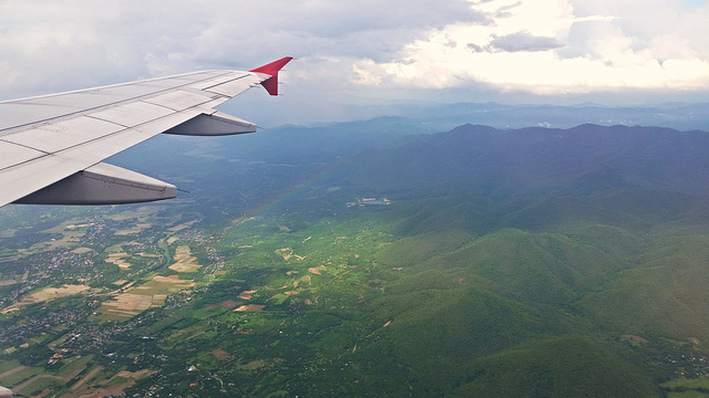
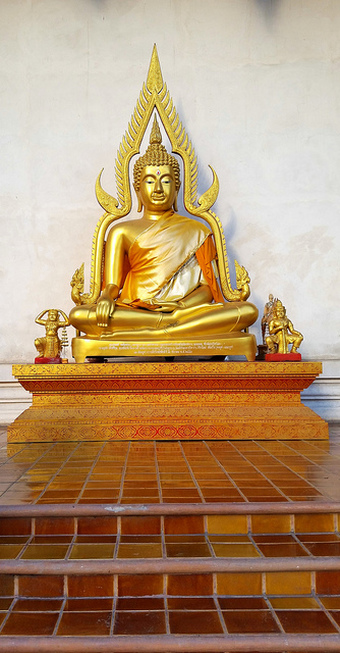
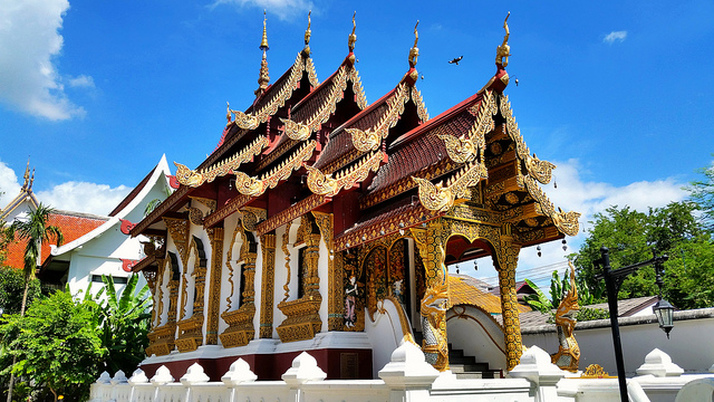

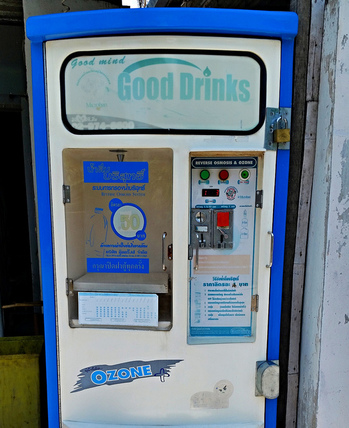
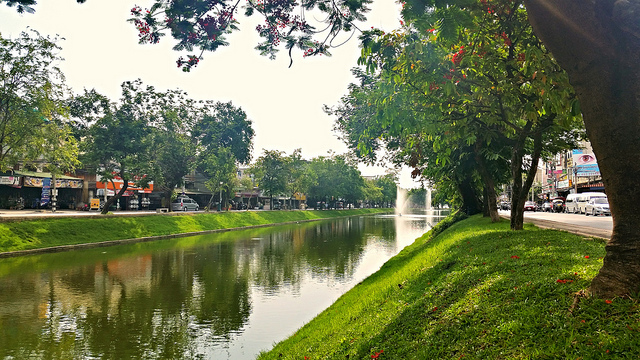
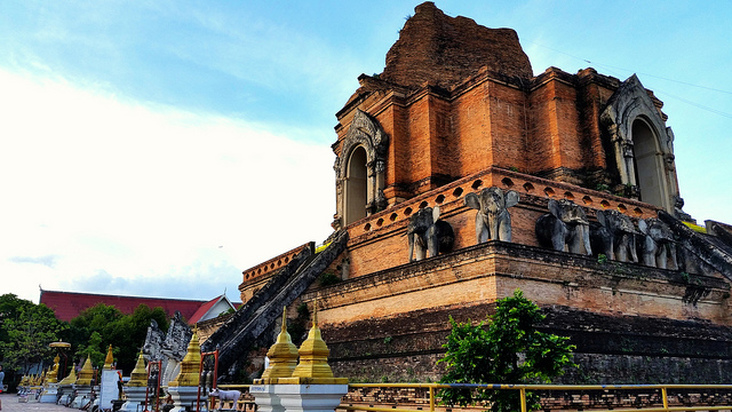
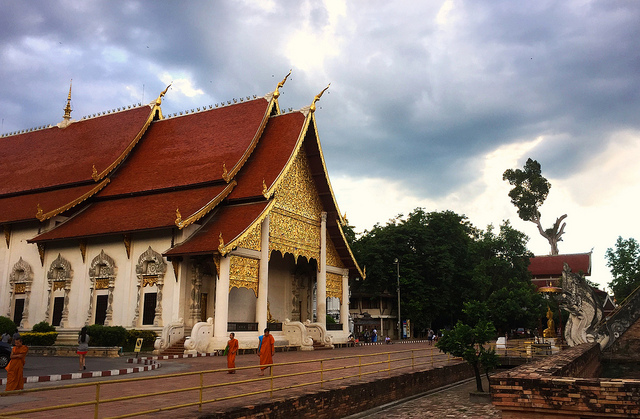
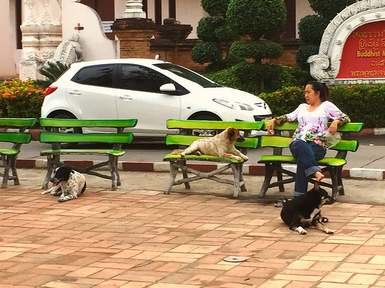
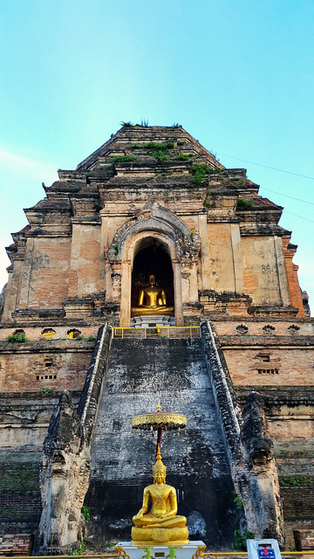
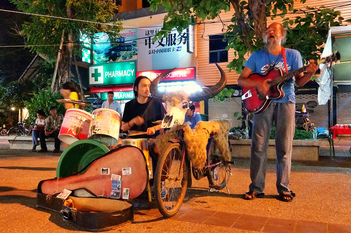
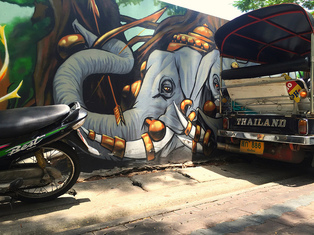
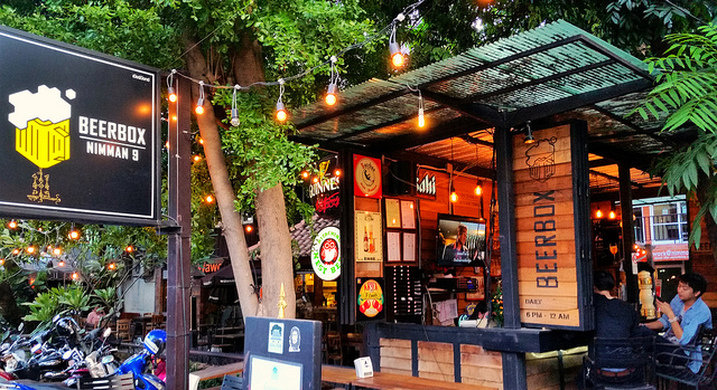
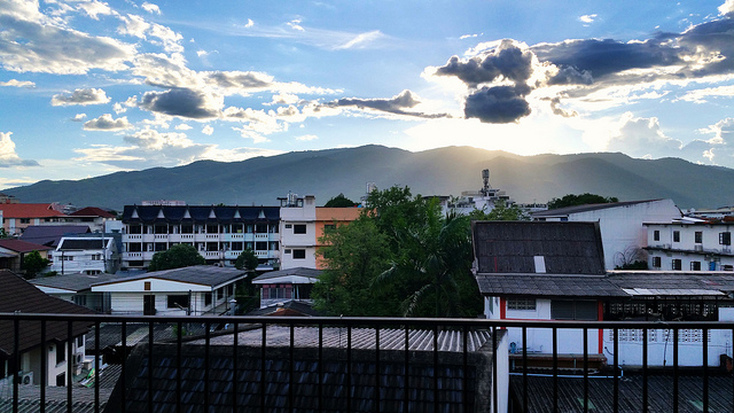
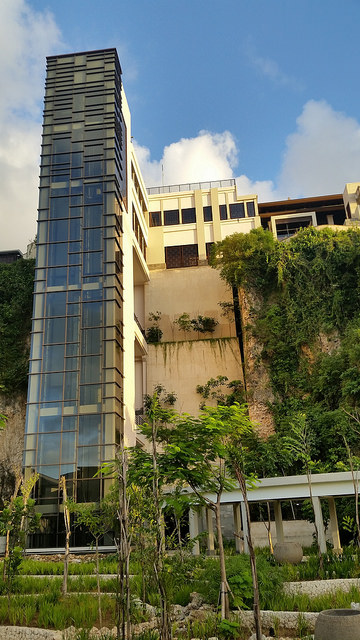
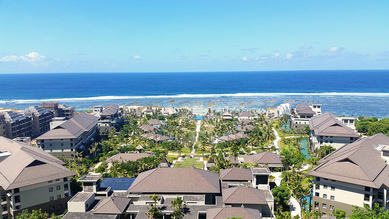
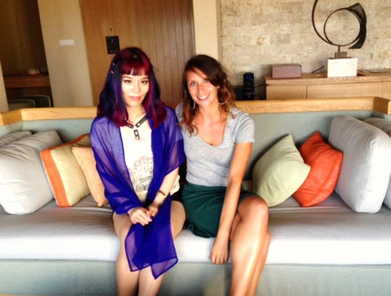
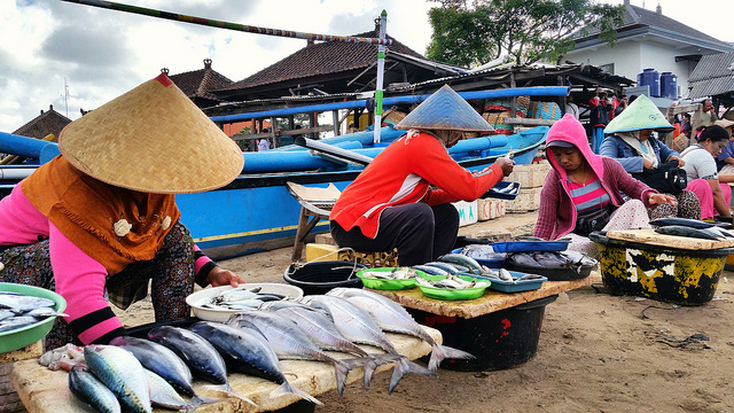
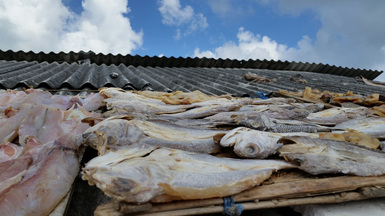
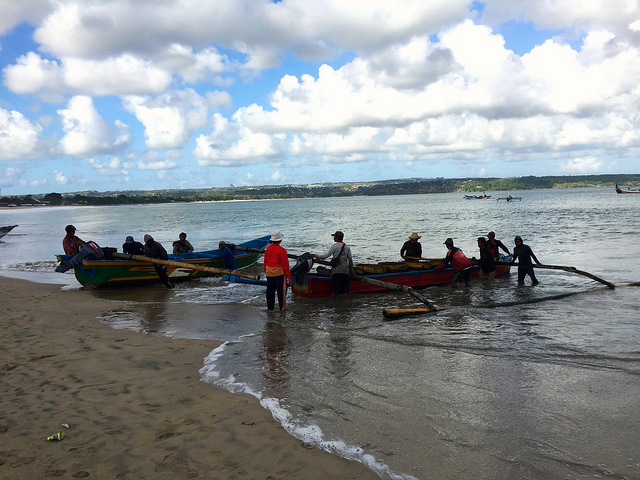
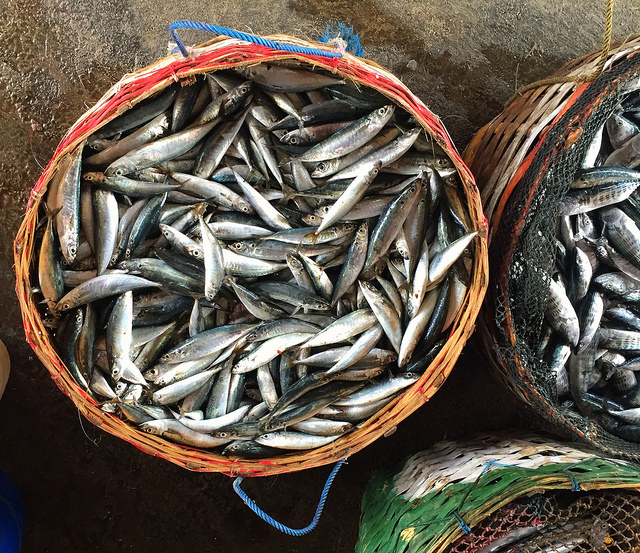
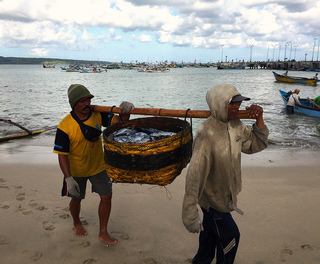
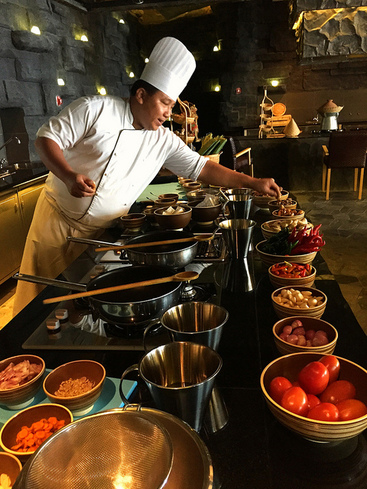
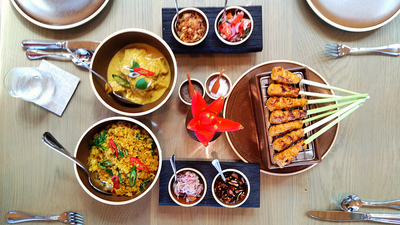
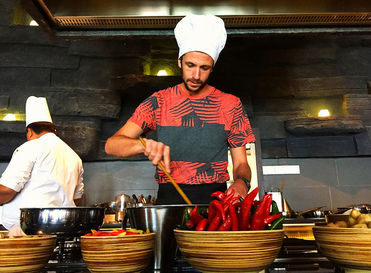
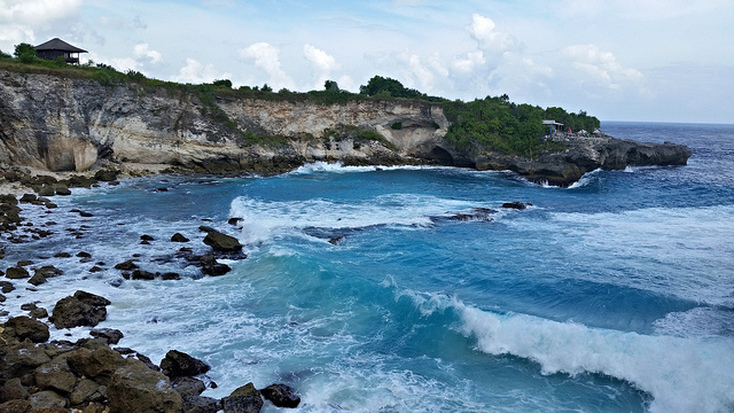
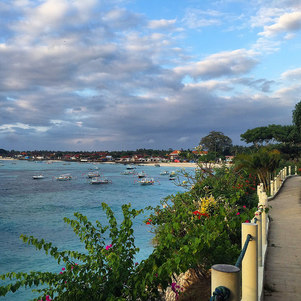
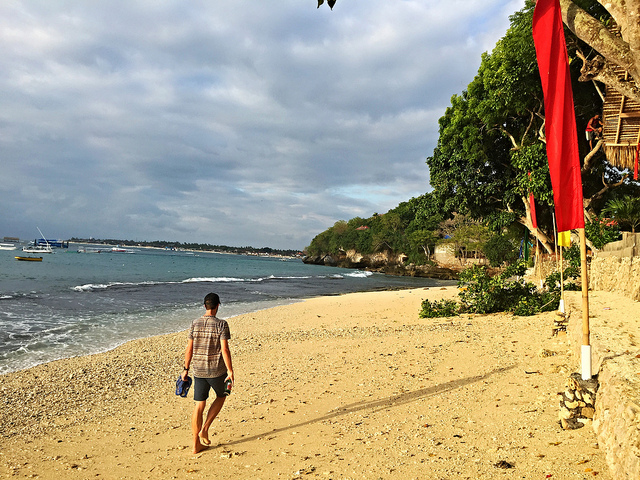
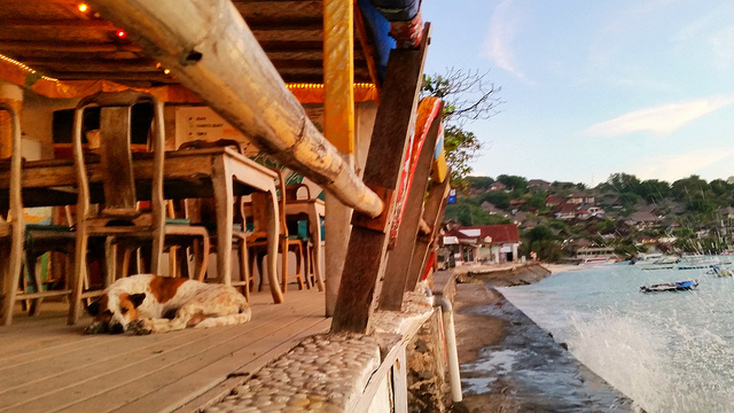
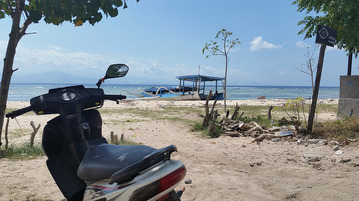
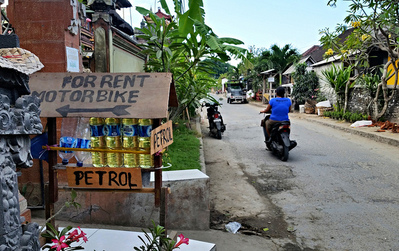
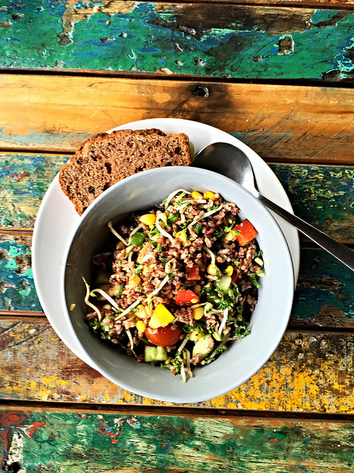
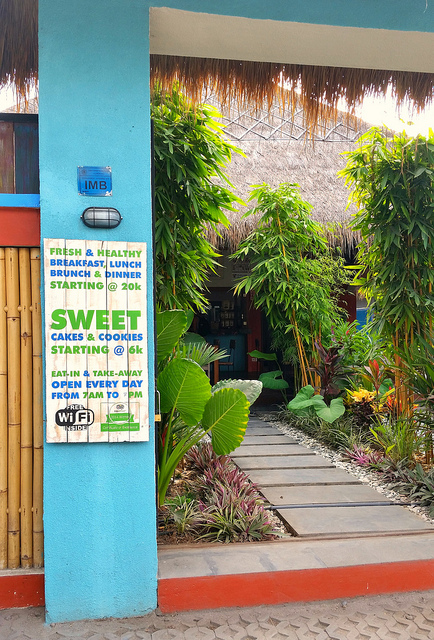
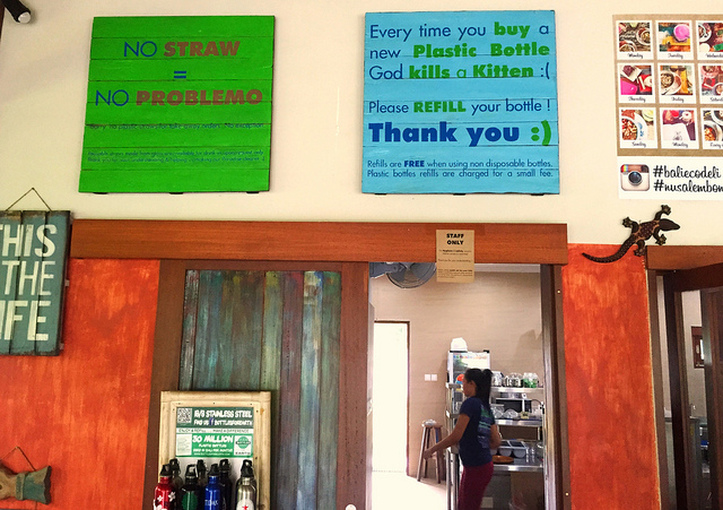
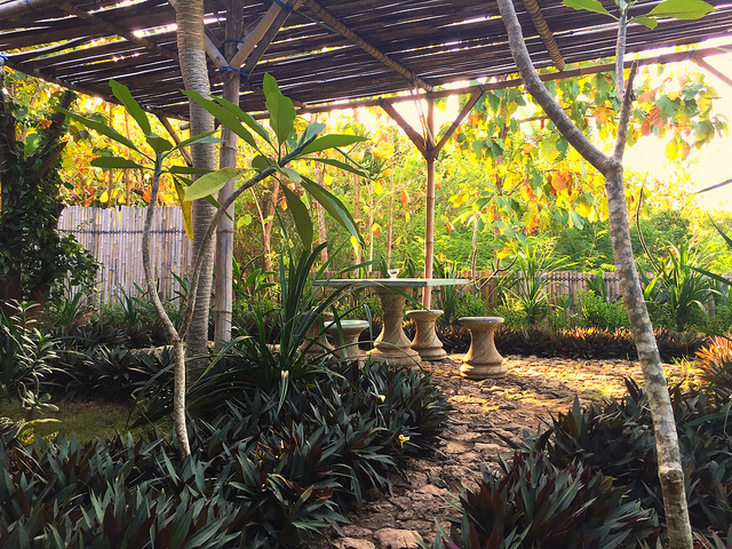
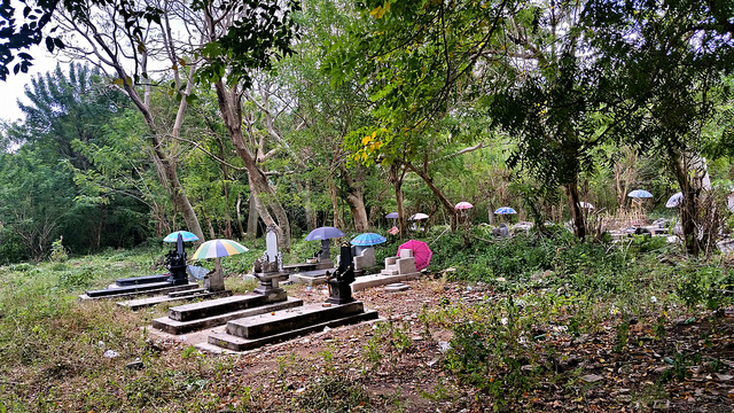
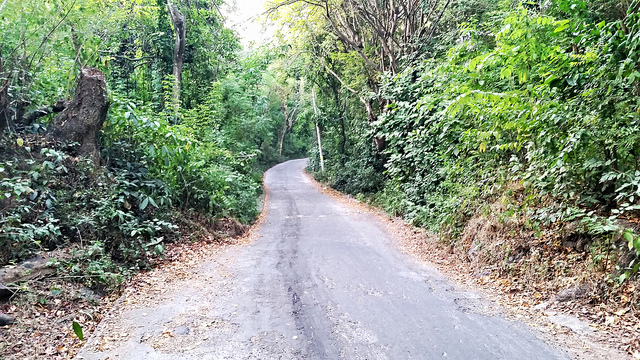
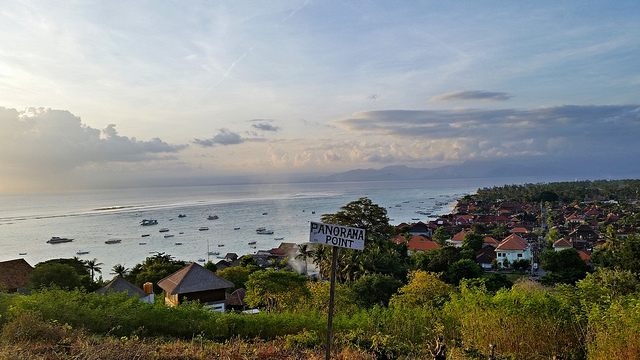
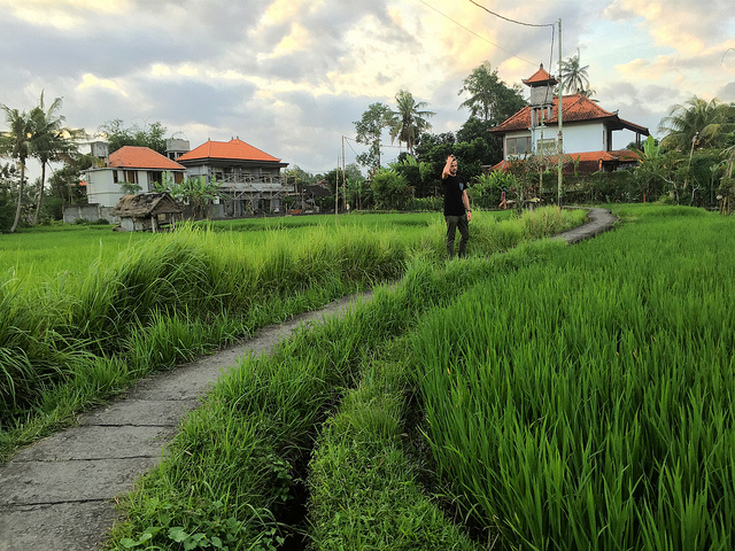
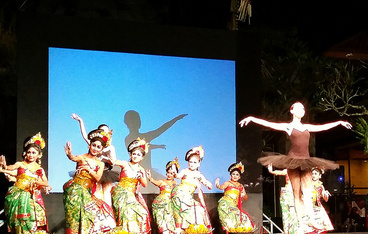
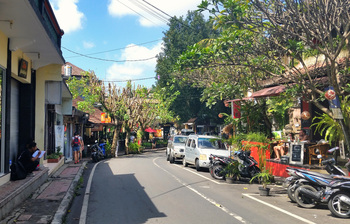
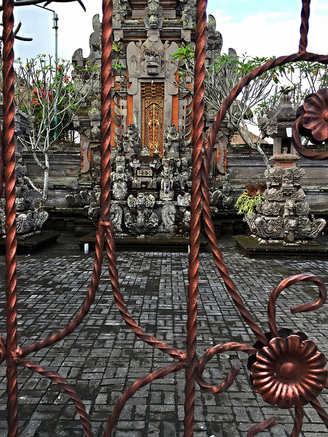
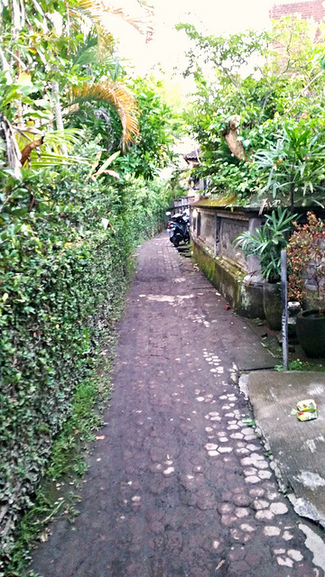
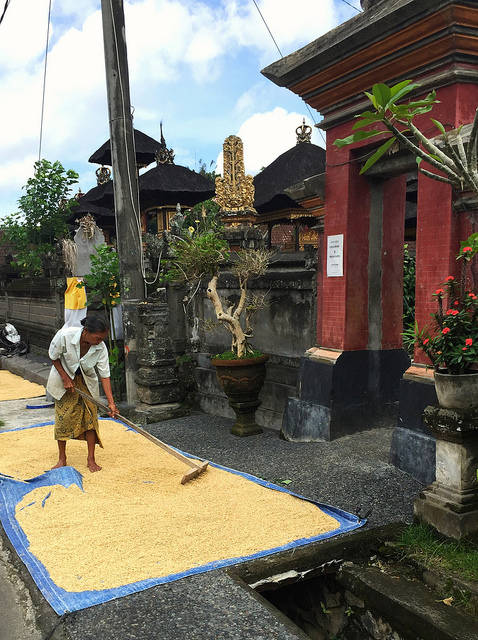
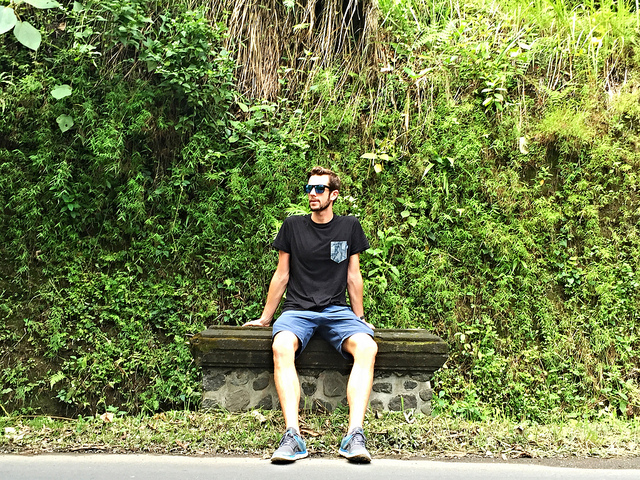
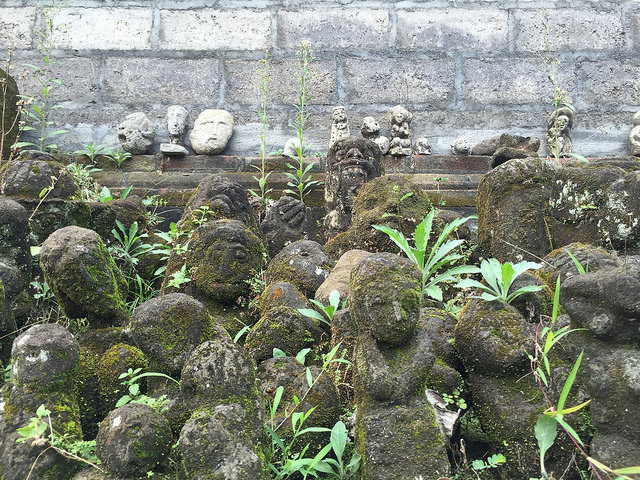
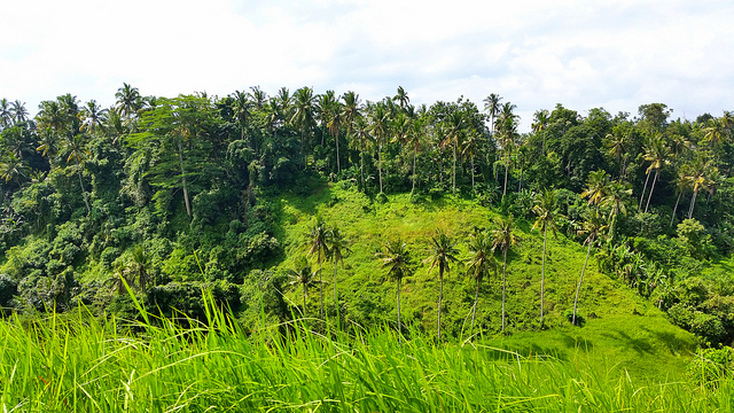
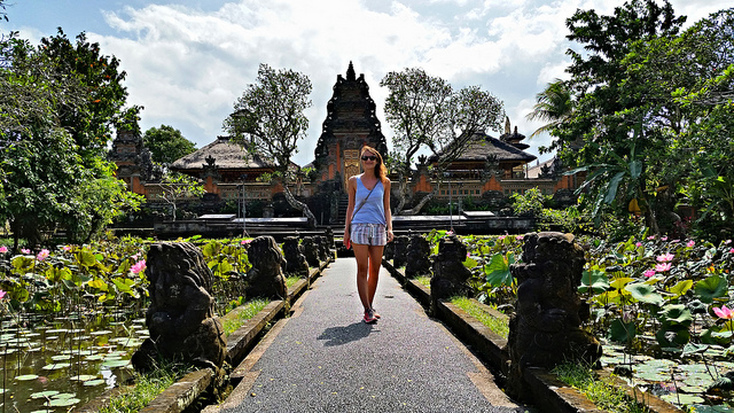
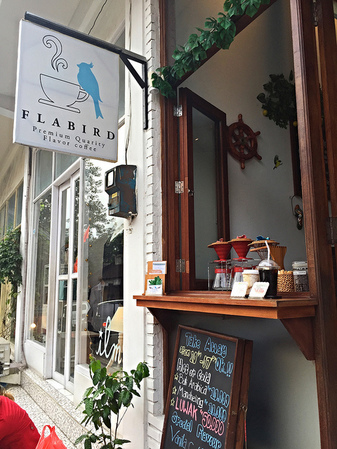
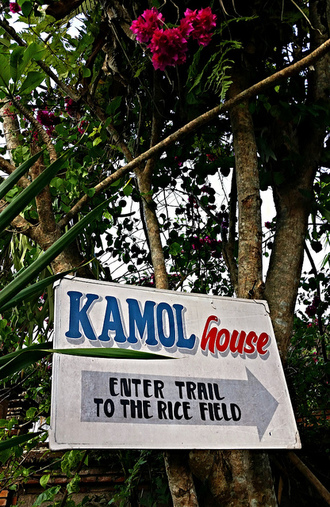
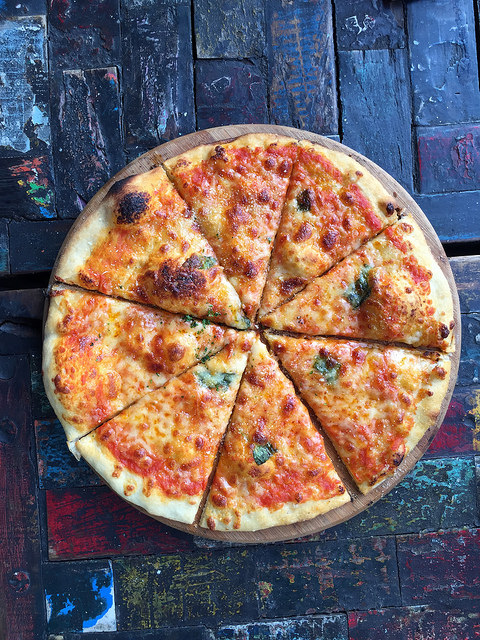
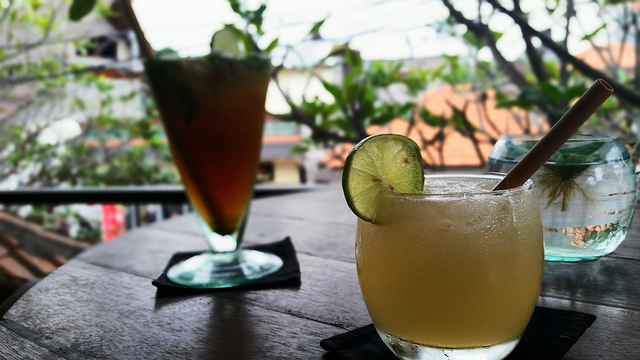
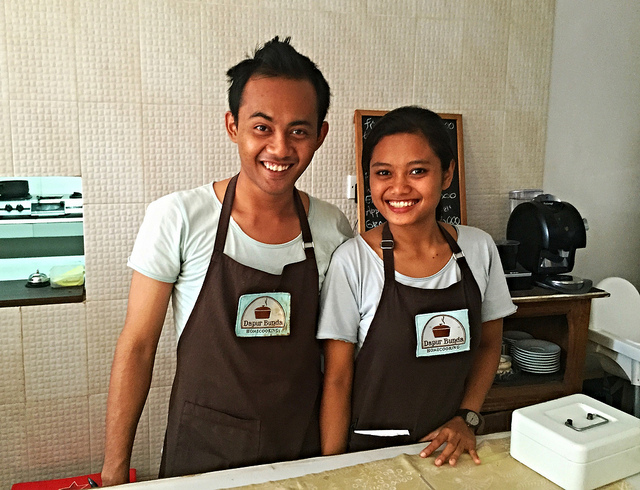
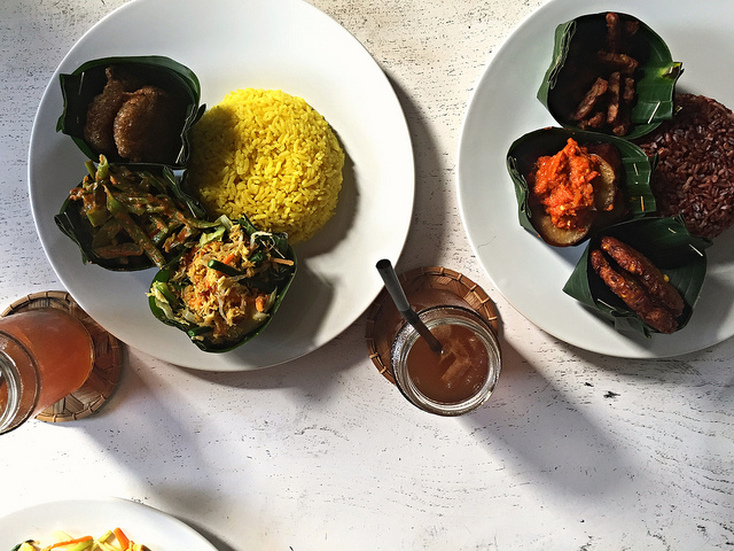
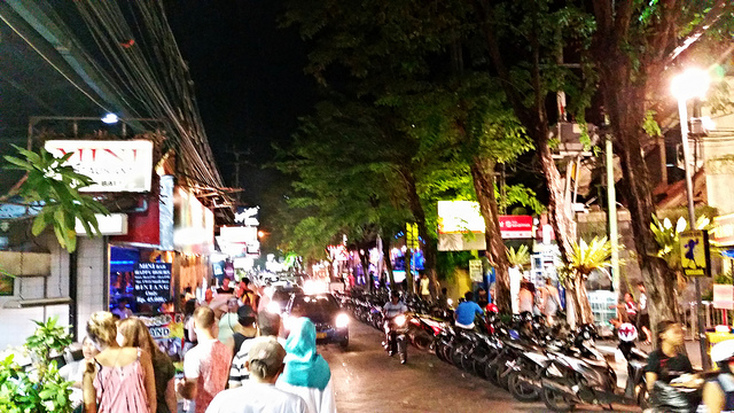
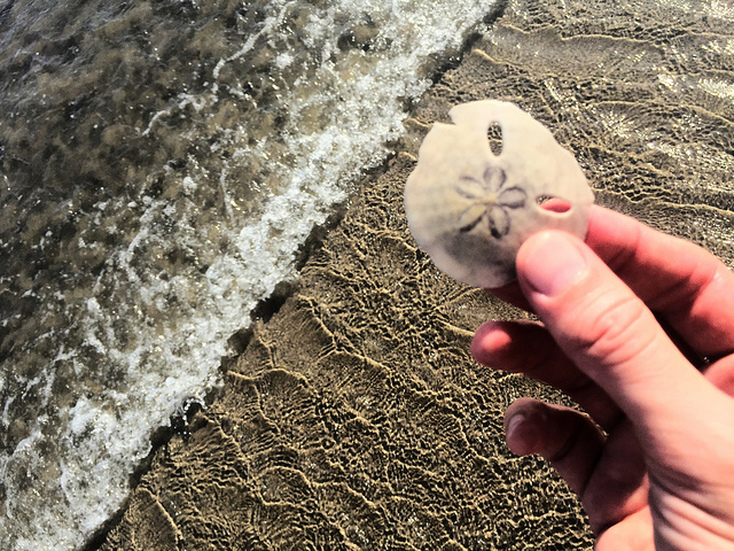
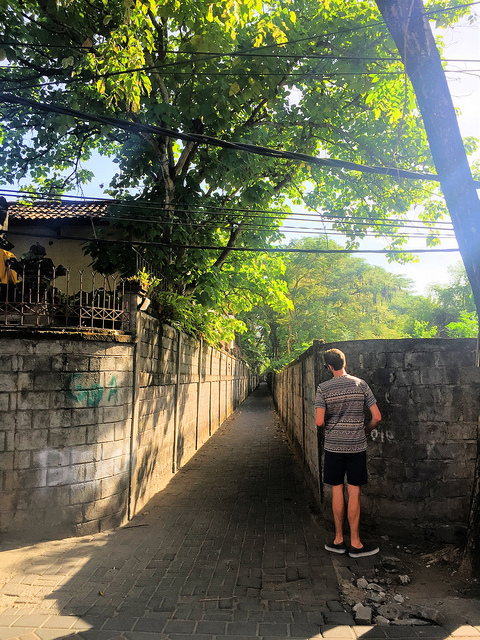
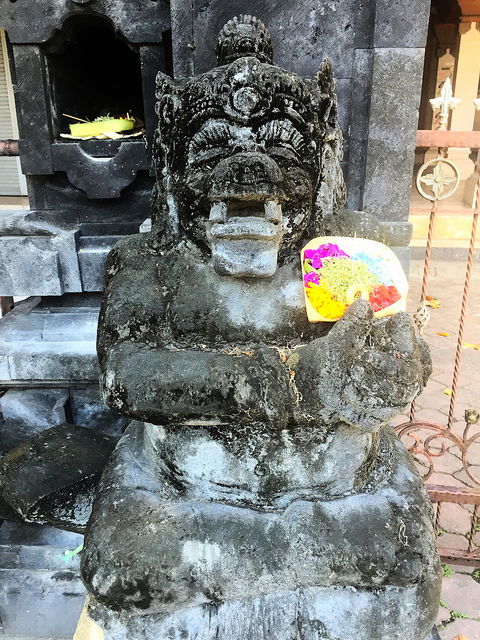
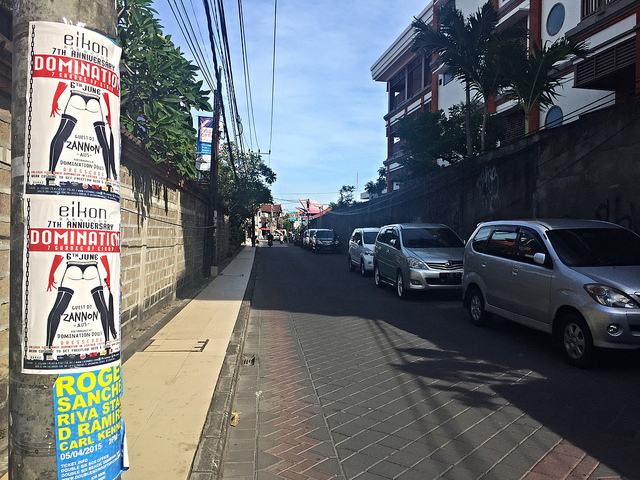
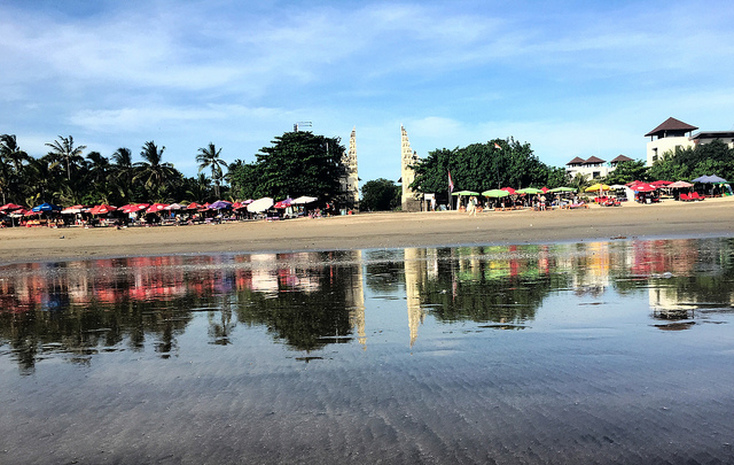
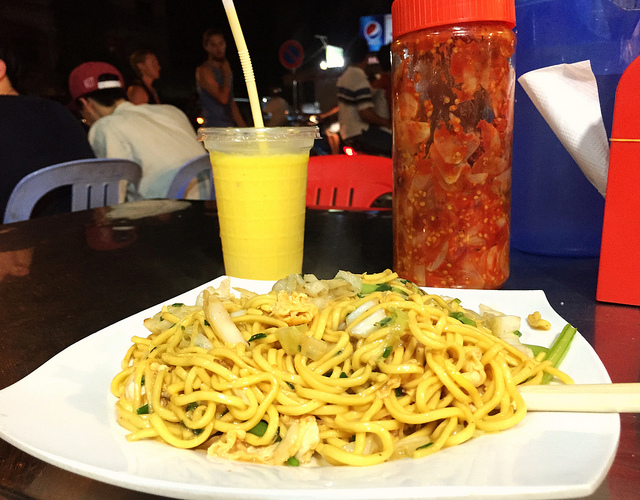
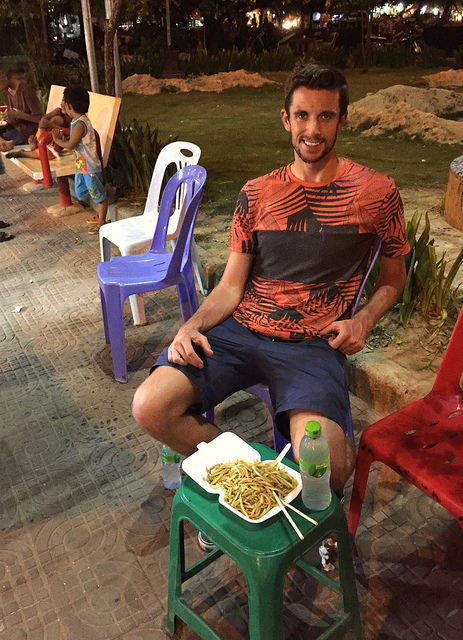
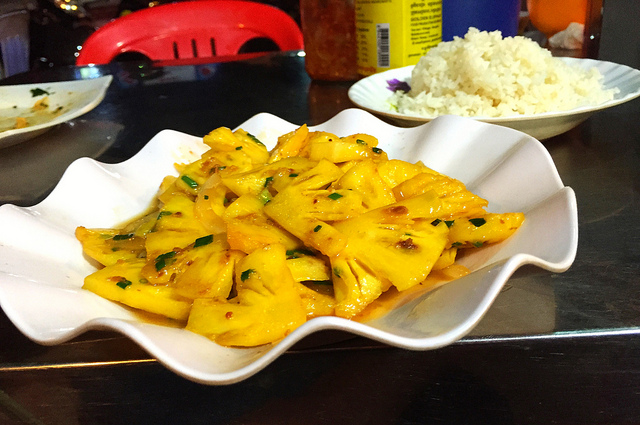
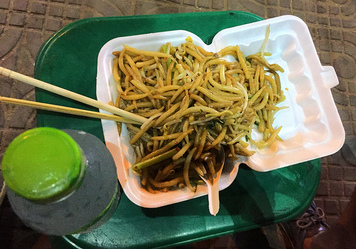
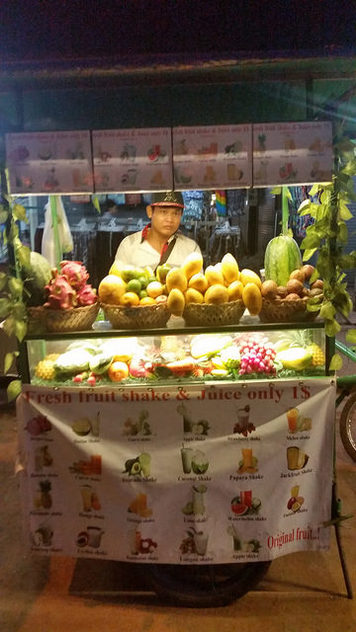
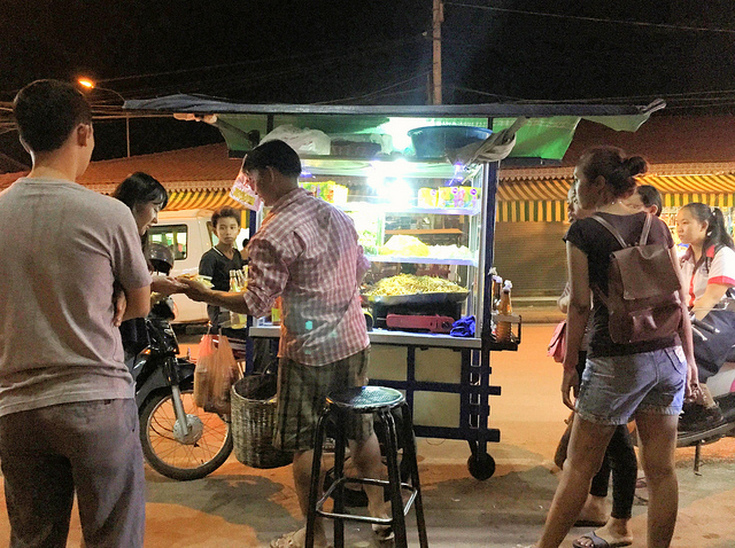
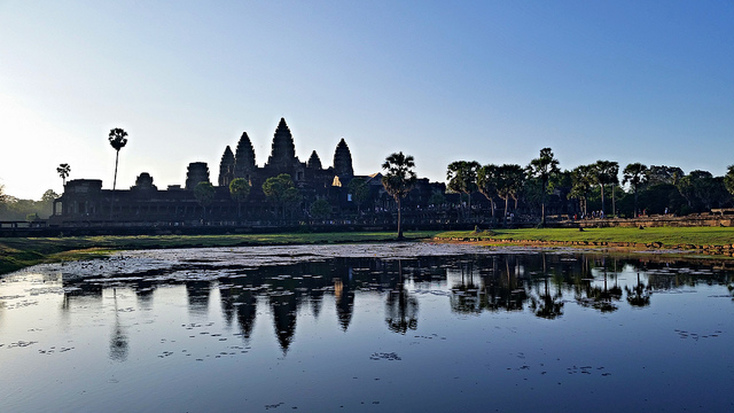
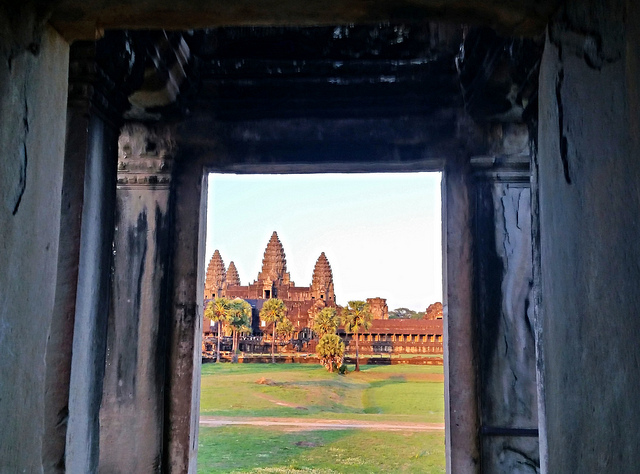
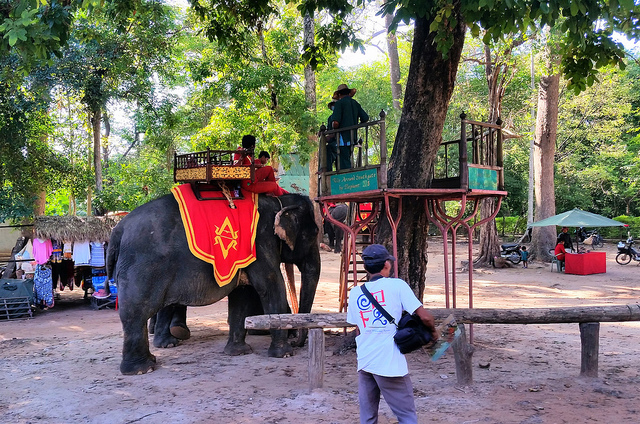
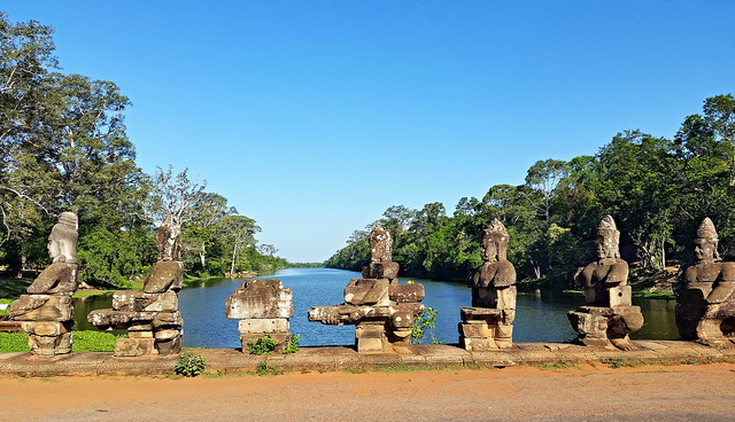

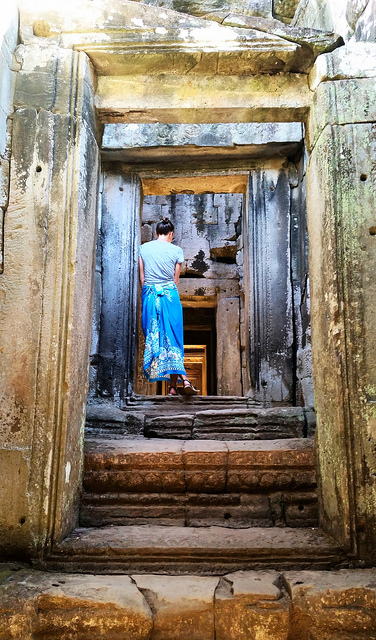
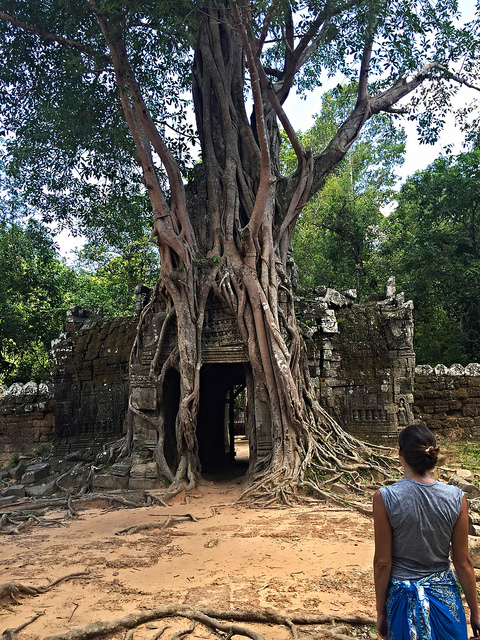
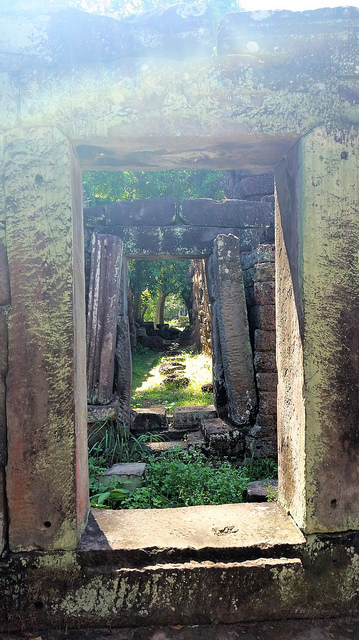
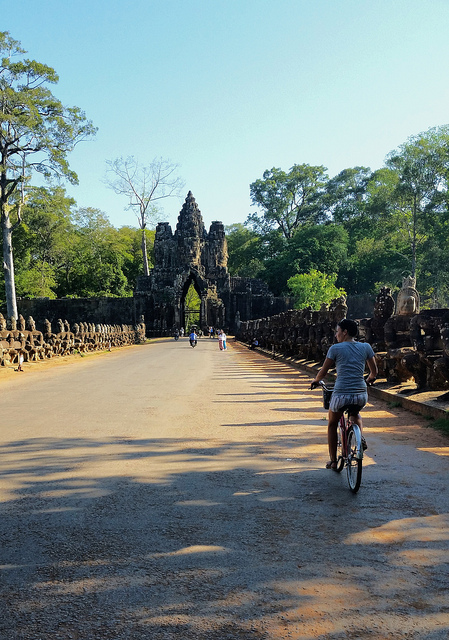
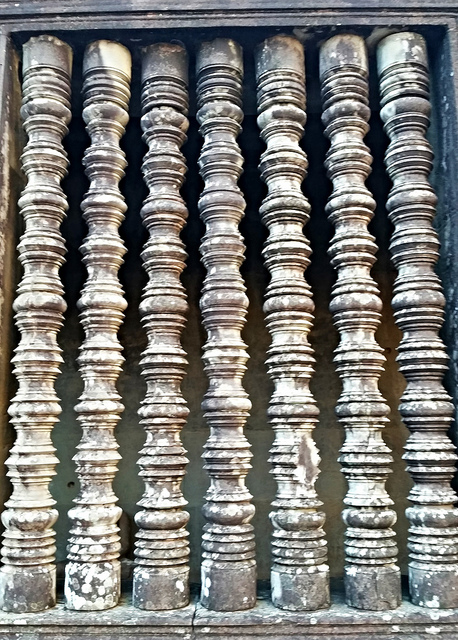
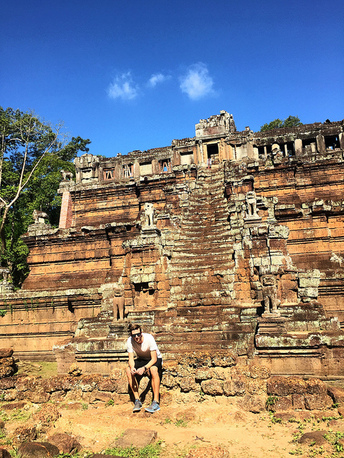
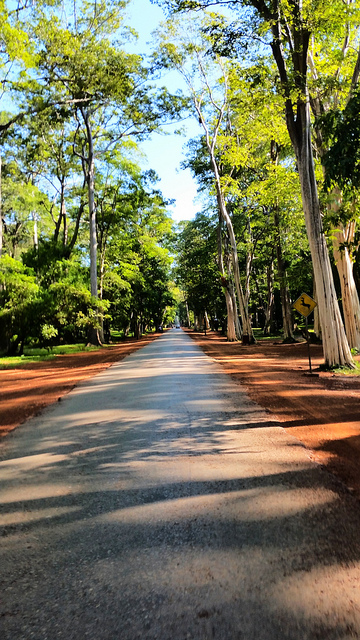
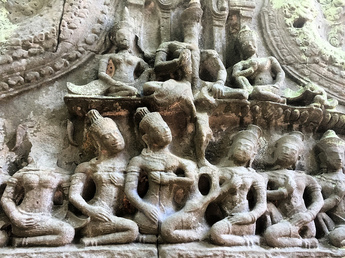
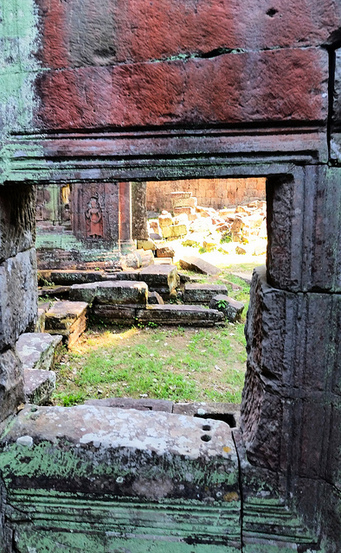
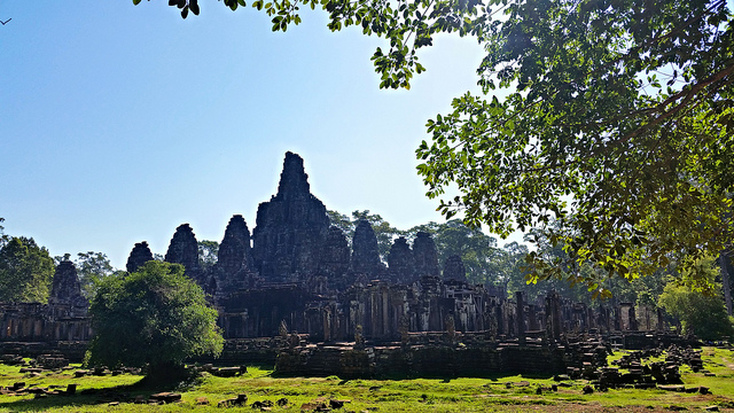
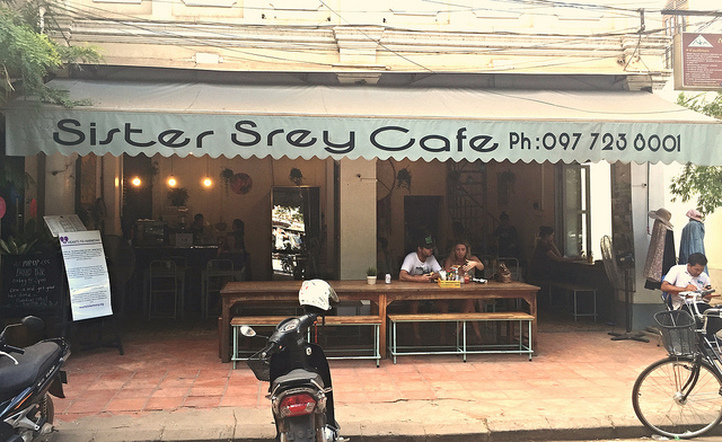

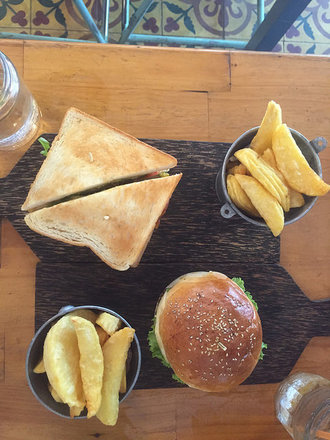
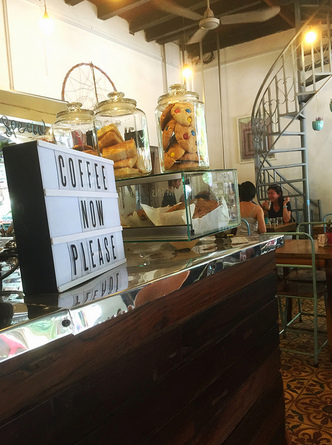
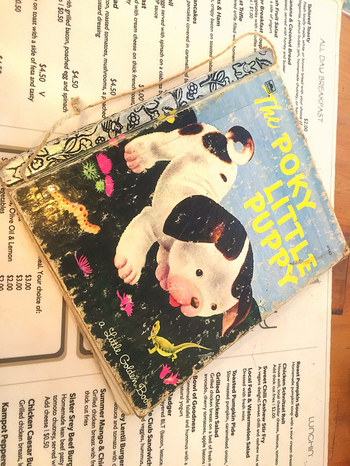
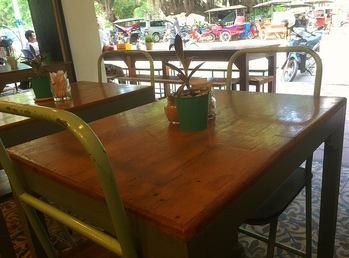
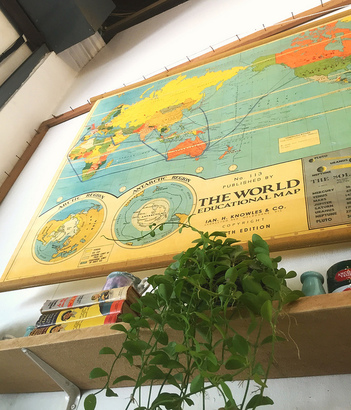
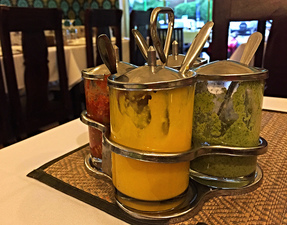
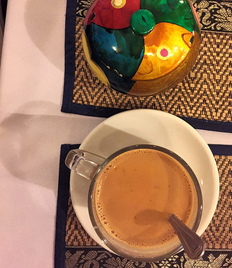

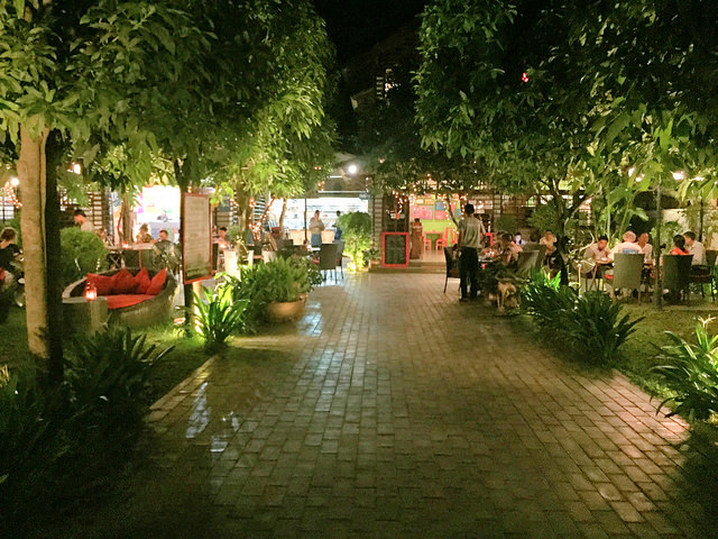
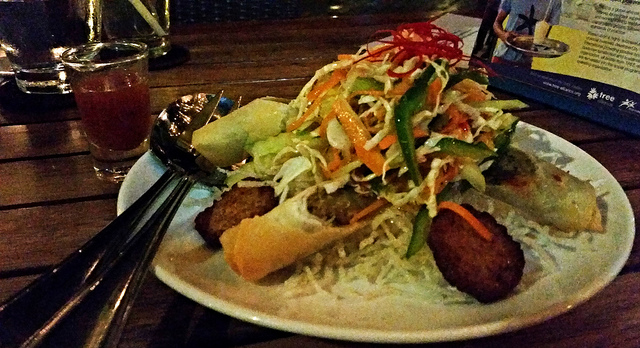
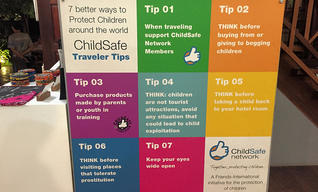
 RSS Feed
RSS Feed
